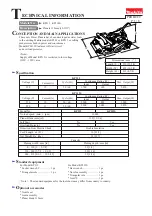
W
AVE
R
UNNER
X
I
S
ERIES
Enhanced Resolution (ERES) Setup
134
WRXi-OM-E Rev C
number of math traces available depends on the software options
e
the
Operator1
field.
1. In the menu bar, touch
Math
, then
Math Setup...
in the drop-down menu.
2. Touch a function tab
F1
through
Fx
The
loaded on your oscilloscope. See Specifications..
3. Touch
insid
4. Select
ERES
from the
All Functions
or
Filter
group of Math functions.
5. Touch
the
Trace On
checkbox.
6. Touch the "ERES" tab in the right-hand dialog, then touch inside the
bits
field and make an "Enhance by"
selection from the pop-up menu:
.
Waveform Copy
The
Copy
math function
makes a copy of your present waveform in its unprocessed state. While
processing may continue on the original waveform, the copy enables faster throughput in some cases by
preserving the original data. That is, no calculations need to be undone on the copy before additional math can be
calculated.
This benefit of faster throughput, however, comes at the expense of memory usage.
Waveform Sparser
The Sparse math function
allows you to thin out an incoming waveform by skipping points at regular
intervals, and by starting acquisition at a particular
offset
(point). The
Sparsing factor
specifies the number of
sample points to reduce the input waveform by. A sparsing factor of 4, for example, tells the oscilloscope to retain
only one out of every 4 samples. A
Sparsing offset
of 3, on the other hand, tells the oscilloscope to begin on the
third sample, then skip the number of samples specified by the sparsing factor (4). In this way, the sample rate is
effectively reduced.
For the sparsing factor (interval), you can set a value from 1 to 1,000,000 points. For the sparsing offset you can
set a value from 0 to 999,999.
Note:
The maximum sparsing offset that can be entered for any sparsing factor equals Sparsing Factor 1
















































